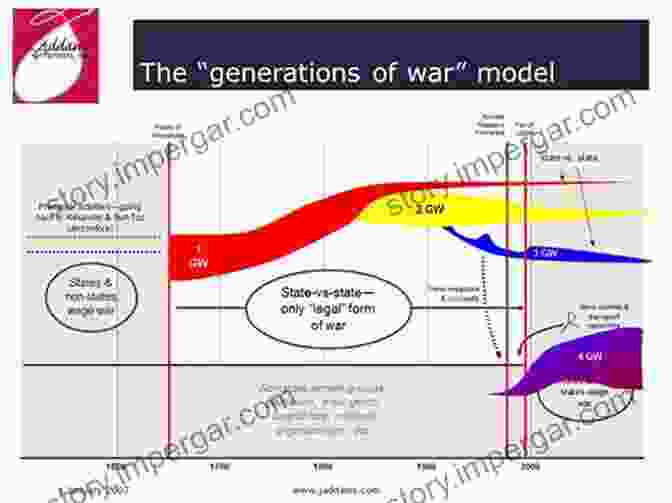From 19th to 21st Century Weapon: The Evolution of Warfare in the Modern Era


The evolution of warfare has been a continuous process throughout human history, driven by technological advancements, strategic innovations, and shifting ethical landscapes. The 19th and 21st centuries have witnessed particularly transformative periods in this evolution, with the of new weapons systems, the rise of aerial warfare, and the emergence of complex geopolitical dynamics. In this article, we will explore the major milestones in the evolution of warfare from the 19th to the 21st century, examining the key factors that have shaped the modern battlefield.
The Rise of Industrialization and Advanced Weaponry
The 19th century marked a watershed moment in the history of warfare with the advent of industrialization. The mass production of weapons led to a proliferation of more powerful and accurate firearms, including repeating rifles and machine guns. Artillery pieces also underwent significant advancements, with the of rifled barrels and increased firing ranges. These technological developments allowed armies to inflict unprecedented levels of damage on enemy forces, leading to devastating casualties and a shift in battlefield tactics.
4.4 out of 5
| Language | : | English |
| File size | : | 1977 KB |
| Text-to-Speech | : | Enabled |
| Enhanced typesetting | : | Enabled |
| Word Wise | : | Enabled |
| Print length | : | 80 pages |
| Screen Reader | : | Supported |
From Muskets to Machine Guns: The Revolution in Infantry Weapons
One of the most significant developments in the evolution of warfare during the 19th century was the replacement of smoothbore muskets with more advanced infantry weapons. The of repeating rifles, such as the Spencer carbine and the Winchester Model 1873, allowed soldiers to fire multiple rounds in rapid succession, significantly increasing their firepower. The invention of the machine gun, particularly the Gatling gun and the Maxim gun, further revolutionized infantry combat. These weapons could unleash a continuous stream of bullets, devastating enemy ranks and suppressing their advances.
Artillery Advancements: Decisive Power on the Battlefield
Artillery played a crucial role in shaping the battlefields of the 19th century. The development of rifled barrels improved the accuracy and range of artillery pieces, allowing them to strike targets with greater precision from afar. The of explosive shells, such as the shrapnel shell, increased the destructive potential of artillery, causing widespread casualties among enemy troops and fortifications.
The Emergence of Aerial Warfare
The late 19th and early 20th centuries saw the birth of aerial warfare, with the invention of airplanes and the development of aerial combat techniques. Initially used for reconnaissance and observation, aircraft soon became platforms for delivering bombs and other weapons, expanding the battlefield into the third dimension. The use of aerial power played a significant role in the outcome of the major conflicts of the 20th century, including World War I and World War II.
The Dawn of Air Power: From Reconnaissance to Bombing
The first airplanes were primarily used for reconnaissance and spotting enemy positions. However, with the development of aerial bombs and rockets, aircraft quickly transformed into offensive weapons. Strategic bombing campaigns, such as the British bombing of German cities during World War II, became a major factor in the war effort, targeting industrial centers and civilian populations.
Aerial Combat: Fighter Planes and the Evolution of Dogfighting
The development of fighter planes led to the emergence of aerial combat as a distinct form of warfare. Early dogfights were conducted using pistols and rifles, but the advent of synchronized machine guns mounted on aircraft allowed pilots to engage in intense air-to-air battles. The development of radar and other technologies further enhanced the effectiveness of aerial combat, leading to the rise of modern fighter aircraft and advanced air combat tactics.
Technological Innovations in the 21st Century
The 21st century has ushered in an era of unprecedented technological advancements, which have had a profound impact on the nature of warfare. Precision-guided munitions, unmanned aerial vehicles (UAVs),and cyber warfare have become integral parts of modern military arsenals, transforming the way wars are fought and blurring the lines between civilian and military targets.
Precision-Guided Munitions: Surgical Strikes with Reduced Collateral Damage
Precision-guided munitions, such as laser-guided bombs and GPS-guided missiles, have revolutionized battlefield targeting. These weapons can strike specific targets with pinpoint accuracy, minimizing collateral damage and enabling surgical strikes against enemy positions. The use of precision-guided munitions has significantly reduced civilian casualties and has become a key component of modern warfare.
Unmanned Aerial Vehicles (UAVs): Eyes in the Sky and Beyond
Unmanned aerial vehicles, commonly known as drones, have become ubiquitous in modern warfare. These unmanned aircraft can provide real-time reconnaissance and surveillance, conduct airstrikes, and perform other missions without risking human lives. UAVs have expanded the reach of military operations, allowing for long-range strikes and persistent surveillance in contested areas.
Cyber Warfare: The New Battlefield in the Digital Realm
The rise of the internet and digital technologies has created a new battlefield in the form of cyberspace. Cyber warfare involves the use of computer networks and digital tools to attack enemy systems, disrupt infrastructure, and gather intelligence. Cyberattacks can have significant consequences, ranging from data breaches and financial losses to disruption of critical infrastructure and military operations.
Ethical Implications of Modern Warfare
The evolution of warfare in the modern era has raised complex ethical questions about the use of weapons and the impact of war on civilians. The indiscriminate nature of certain weapons systems, such as cluster bombs and anti-personnel landmines, has led to widespread condemnation and calls for their ban. The use of torture and other inhumane tactics in war has also drawn significant criticism.
The Responsibility to Protect: Civilians in the Crosshairs
The principle of "responsibility to protect" (R2P) emphasizes the international community's obligation to prevent genocide, war crimes, ethnic cleansing, and crimes against humanity. R2P has influenced the development of international laws and norms governing the use of force and the protection of civilians in armed conflict.
The Limits of War: Ethical Constraints on Weapons and Tactics
The Geneva Conventions and other international treaties have established ethical constraints on the use of weapons and tactics in warfare. These treaties prohibit the use of certain weapons, such as chemical and biological weapons, and place limits on the targeting of civilians and non-military objectives. The ethical implications of modern warfare remain a complex and ongoing debate.
The evolution of warfare from the 19th to the 21st century has been marked by transformative technological advancements, strategic shifts, and ethical debates. From the of advanced weaponry to the rise of aerial power and the emergence of cyber warfare, the nature of combat has undergone a profound transformation. The modern battlefield is a complex and fluid environment, where precision-guided munitions, unmanned vehicles, and digital tools play an increasingly significant role. The ethical implications of modern warfare continue to challenge our understanding of war and the limits of human conflict. As we navigate the 21st century, it is essential to engage in thoughtful discussion and international cooperation to promote responsible and ethical conduct in the pursuit of peace and security.
4.4 out of 5
| Language | : | English |
| File size | : | 1977 KB |
| Text-to-Speech | : | Enabled |
| Enhanced typesetting | : | Enabled |
| Word Wise | : | Enabled |
| Print length | : | 80 pages |
| Screen Reader | : | Supported |
Do you want to contribute by writing guest posts on this blog?
Please contact us and send us a resume of previous articles that you have written.
 Book
Book Novel
Novel Page
Page Chapter
Chapter Text
Text Story
Story Genre
Genre Reader
Reader Library
Library Paperback
Paperback E-book
E-book Magazine
Magazine Newspaper
Newspaper Paragraph
Paragraph Sentence
Sentence Bookmark
Bookmark Shelf
Shelf Glossary
Glossary Bibliography
Bibliography Foreword
Foreword Preface
Preface Synopsis
Synopsis Annotation
Annotation Footnote
Footnote Manuscript
Manuscript Scroll
Scroll Codex
Codex Tome
Tome Bestseller
Bestseller Classics
Classics Library card
Library card Narrative
Narrative Biography
Biography Autobiography
Autobiography Memoir
Memoir Reference
Reference Encyclopedia
Encyclopedia Margaret Pemba
Margaret Pemba Mariano Sigman
Mariano Sigman Michele Sfakianos
Michele Sfakianos Mark Hemmings
Mark Hemmings Santhy Shetty
Santhy Shetty Pamela Jane Rogers
Pamela Jane Rogers Tara A Devlin
Tara A Devlin Shirley Taylor
Shirley Taylor Mark Barber
Mark Barber Sir Arthur Stanley Eddington
Sir Arthur Stanley Eddington Willa Cather
Willa Cather Mary Ann Dufresne
Mary Ann Dufresne Steven Rabalais
Steven Rabalais Mark A Barnhouse
Mark A Barnhouse Martin M Antony
Martin M Antony Tess Cook
Tess Cook Marlee Grace
Marlee Grace Max M Houck
Max M Houck Vickie Dellaquila
Vickie Dellaquila Robert Bryce
Robert Bryce
Light bulbAdvertise smarter! Our strategic ad space ensures maximum exposure. Reserve your spot today!
 Victor HugoFollow ·4.2k
Victor HugoFollow ·4.2k Rick NelsonFollow ·3k
Rick NelsonFollow ·3k Dallas TurnerFollow ·14.2k
Dallas TurnerFollow ·14.2k Shawn ReedFollow ·14.7k
Shawn ReedFollow ·14.7k Roy BellFollow ·9.3k
Roy BellFollow ·9.3k Ira CoxFollow ·7.6k
Ira CoxFollow ·7.6k Jaime MitchellFollow ·8.5k
Jaime MitchellFollow ·8.5k Terry PratchettFollow ·7.6k
Terry PratchettFollow ·7.6k

 Roberto Bolaño
Roberto BolañoUnveiling the Beauty and History of the Medici Iris: A...
In the realm of...

 Theodore Mitchell
Theodore MitchellImproving Gut Health in Poultry: Unlocking the Path to...
In the ever-evolving field of...

 Victor Hugo
Victor HugoPersonalized Medicine with a Nanochemistry Twist:...
The future of healthcare...

 George Martin
George MartinA Year Of Wine: Perfect Pairings Great Buys And What To...
## Year of Wine: An Epic Journey Through the...

 Tom Hayes
Tom HayesDelve into the Enigmatic World of Southern Africa's...
Embark on a captivating journey through the...
4.4 out of 5
| Language | : | English |
| File size | : | 1977 KB |
| Text-to-Speech | : | Enabled |
| Enhanced typesetting | : | Enabled |
| Word Wise | : | Enabled |
| Print length | : | 80 pages |
| Screen Reader | : | Supported |














